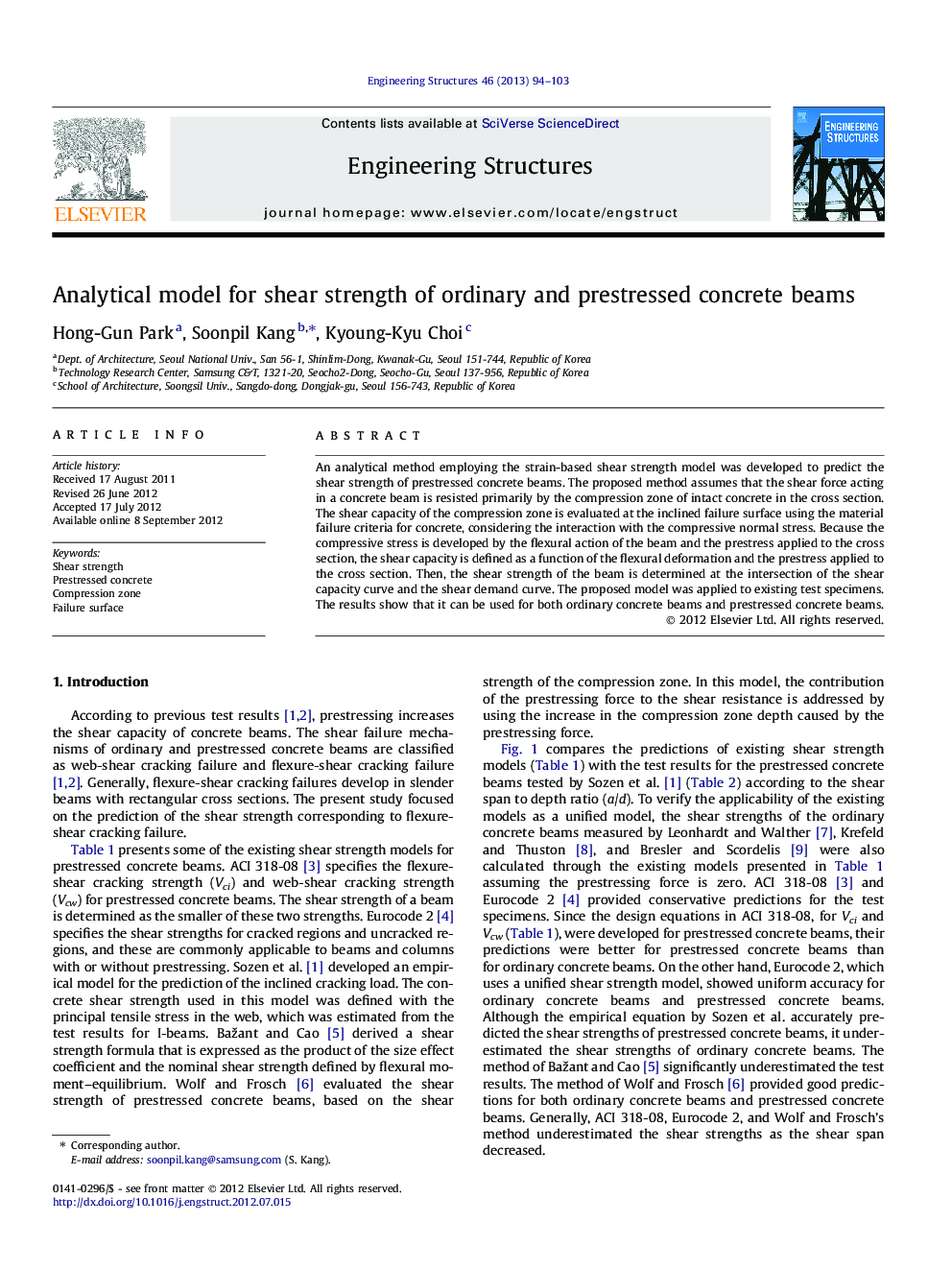| Article ID | Journal | Published Year | Pages | File Type |
|---|---|---|---|---|
| 267312 | Engineering Structures | 2013 | 10 Pages |
An analytical method employing the strain-based shear strength model was developed to predict the shear strength of prestressed concrete beams. The proposed method assumes that the shear force acting in a concrete beam is resisted primarily by the compression zone of intact concrete in the cross section. The shear capacity of the compression zone is evaluated at the inclined failure surface using the material failure criteria for concrete, considering the interaction with the compressive normal stress. Because the compressive stress is developed by the flexural action of the beam and the prestress applied to the cross section, the shear capacity is defined as a function of the flexural deformation and the prestress applied to the cross section. Then, the shear strength of the beam is determined at the intersection of the shear capacity curve and the shear demand curve. The proposed model was applied to existing test specimens. The results show that it can be used for both ordinary concrete beams and prestressed concrete beams.
► Shear strength of concrete beams is evaluated along the inclined failure surface. ► Compression zone of intact concrete is assumed to primarily resist to the shear force. ► Shear strength is determined as a intersection of shear capacity and demand curves. ► Prestressing force increases the shear strength with larger compression zone. ► A unified analytical model applicable to both ordinary and prestressed concrete beams.
